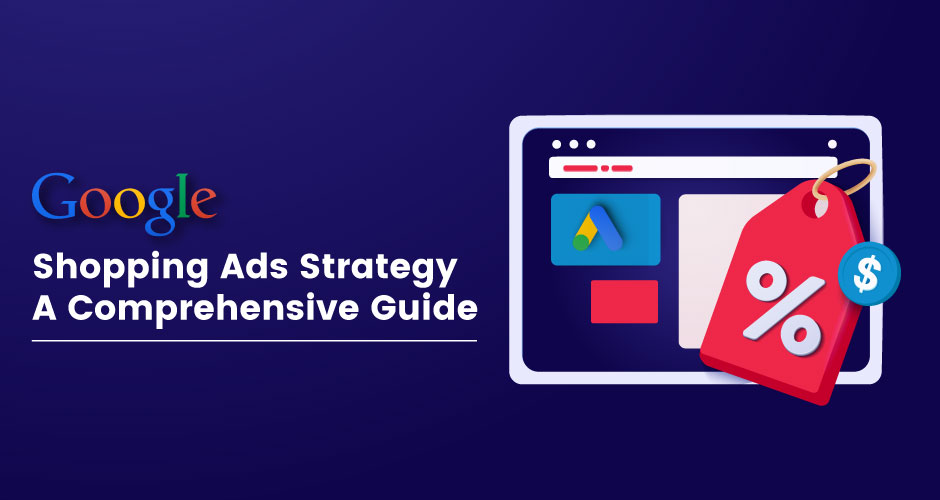
Google Shopping Ads Strategy: A Comprehensive Guide

Google Shopping Ads have transformed the e-commerce landscape, offering businesses a powerful tool to showcase their products directly within Google’s search results. By leveraging this platform, advertisers can drive more qualified traffic to their online stores, resulting in increased sales and ROI. This article delves deep into the strategies that can make your Google Shopping Ads campaigns a resounding success.

Google Shopping Ads Strategy: A Comprehensive Guide Google Ads Campaign Structure
Why Google Shopping Ads?
Google Shopping Ads, also known as Product Listing Ads (PLA), are a game-changer for e-commerce businesses. Unlike traditional text ads, these ads showcase product images, prices, and merchant names right at the top of search results, capturing user attention instantly.
Benefits:
-
Visual Appeal: Product images make the ads more engaging.
- Higher Click-Through Rates (CTR): Users get a preview before clicking, leading to more qualified traffic.
- Better Conversion Rates: With detailed product information upfront, users are more likely to purchase.
Crafting the Perfect Campaign Structure
A well-structured campaign is the foundation of success. Here’s how to get it right:
Product Segmentation
Segment your products based on categories, brands, or profit margins. This allows for tailored bidding strategies and better budget allocation.
Prioritize High-Performing Products
Identify best-sellers or high-margin products and allocate a higher budget to them. This ensures they remain highly visible.
Use Negative Keywords
Filter out irrelevant searches by adding negative keywords. This prevents wasted clicks and optimizes ad spend.

Google Shopping Ads Strategy: A Comprehensive Guide Google Ads Campaign Structure
Monitoring and Optimization
Regularly review campaign performance. Look for areas of improvement and adjust accordingly.
Bid Adjustments
Adjust bids based on device performance, geographic locations, and time of day. For instance, if mobile users convert better, allocate a higher bid for mobile devices.
A/B Testing
Test different product images or titles to see which ones resonate more with the audience.
Feedback Loop
Use Google Analytics (GA4) to gain insights into user behaviour post-click. This can inform further optimization.
Advanced Features and Strategies
Leverage advanced features to stay ahead of the competition.
Showcase Ads
Instead of promoting a single product, showcase a curated list. This is especially useful for broad search terms.
Merchant Promotions
Offer special promotions like discounts or free shipping. Highlight these in your ads to attract more clicks.
Local Inventory Ads
For businesses with physical stores, showcase in-store products to nearby searchers.
Internal Resources and Further Reading
For more insights and strategies on Google Shopping Ads, consider checking out the following resources:
- Google Shopping Ads Best Practices
- Advanced Techniques for Google Shopping
- Case Studies on Successful Google Shopping Campaigns
Conclusion
Google Shopping Ads are an indispensable tool for e-commerce businesses. By crafting a well-structured campaign, monitoring and optimizing regularly, and leveraging advanced features, advertisers can significantly boost their ROI. Stay ahead of the curve by continuously updating your strategies and keeping an eye on the latest trends and features.
FAQs on Google Shopping Ads Strategy
Why are Google Shopping Ads important for e-commerce businesses?
Google Shopping Ads provide a visual and detailed preview of products directly within search results, leading to higher CTRs and conversion rates. They offer a competitive edge in the e-commerce landscape.
How often should I review and optimize my Google Shopping Ads campaigns?
Regular monitoring is crucial. Ideally, review performance weekly. This allows for timely adjustments and ensures optimal performance.
What’s the difference between standard Google Ads and Google Shopping Ads?
While both are advertising tools within Google’s ecosystem, standard Google Ads are text-based, whereas Google Shopping Ads showcase product images, prices, and merchant names, offering a more visual appeal.
Are there any advanced features in Google Shopping Ads that can give me an edge?
Yes, features like Showcase Ads, Merchant Promotions, and Local Inventory Ads can provide additional advantages and help your ads stand out.
How do I set a budget for my Google Shopping Ads campaign?
Start with a test budget, monitor performance, and adjust based on ROI. Consider factors like profit margins, competition, and overall marketing budget.
More Realted Blogs:







